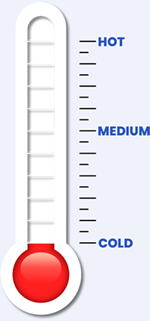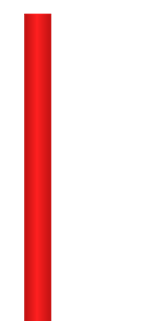-
 Census 2021 Data
Census 2021 Data -
 Homes & Property
Homes & Property -
 Law and Order
Law and Order -
 Jobs & Economy
Jobs & Economy -
 Learning & Schools
Learning & Schools -
 Essential Services
Essential Services -
 Travel & Transport
Travel & Transport -
 Local Amenities
Local Amenities -
 Leisure & Recreation
Leisure & Recreation -
 Environment
Environment
Yield
DA2 8DN Dartford District (B)
This section gives the estimated property yield for the postcode based on our own unique algorithms, comparing it to the national average. We analyse gigabytes of data to explore why yields might be higher, lower, or in line with expectations. From local market trends to demand and property types, the data paints a clear picture of investment potential in DA2 8DN.
Estimated yield for property investors
4.2%
Yield
The estimated yield for the DA2 8DN postcode area is 4.2%, which is higher than the national average yield of 3.8%.


Summary
Low yields combined with moderate safety levels in DA2 8DN suggest that this area may not be the best choice for property investors looking for strong returns. It may be worth exploring other areas with higher yield potential.
Property yields in DA2 8DN are lower than average, which might reflect a more mature or stable market where opportunities for high returns are limited.
The combination of lower yields and higher levels of crime might indicate that the area is significantly less desirable for high-return investments due to its lack of safety. However, it could still appeal to those seeking stable, long-term growth.
The less urban nature of DA2 8DN suggests a more suburban or rural setting, which could mean lower rental demand but potentially higher property values if the area is considered desirable for homebuyers.
With a lower ownership rate, the area might offer more rental opportunities, but investors should consider whether demand is driven by the convenience of renting or a lack of affordability in purchasing.
The economic stability in DA2 8DN, indicated by moderate to high income levels and lower unemployment, bodes well for both property values and rental yields, as residents are more likely to afford stable housing.
Factors affecting yield in DA2 8DN
Understanding property yield involves considering various factors like affordability, income, and crime rates. These elements influence rental demand, property values, and ultimately, the return on investment.
Property Yield (%)
This is the return on investment from a property, typically calculated by dividing annual rental income by the property's value. A higher yield in DA2 8DN suggests better profitability, influenced by local demand, property prices, and rental rates.
Property Affordability
Affordability reflects the relationship between property prices and local income levels in DA2 8DN. In regions with lower affordability, rental demand may rise, boosting yields, though it may also deter potential buyers, influencing future property values.
Rental Affordability
Rental affordability examines the income proportion spent on rent. When rents are high compared to income, it can limit tenant interest and yield. Conversely, affordable rent levels may attract and retain tenants, supporting yield consistency.
Household Income
When household income is high, residents are often able to pay higher rents, which could improve yields. Yet, in more affluent areas, the higher property prices might result in a lower yield percentage, even with healthy rental income.
Urban Location
Higher yields are frequently observed in urban areas due to strong demand from renters, particularly among a young, mobile workforce. However, the high property costs typical of urban areas can balance out rental income, potentially lowering yield percentages.
Employment Score
High unemployment can indicate economic challenges, leading to lower rental demand and higher vacancy rates, which negatively impact yields. In contrast, low unemployment usually signifies a stable economy, resulting in stronger rental demand and higher yields.
Outright Ownership
High outright ownership rates often suggest a more settled community with reduced rental demand, which might lower yields. Conversely, areas with fewer outright owners could see more demand for rental properties, potentially improving yields.
Crime & Safety Levels
Areas with high crime rates can be less appealing to renters, leading to lower property values and yields. On the other hand, low crime rates attract renters and buyers, increasing both rental income and property values, thereby improving yield.
Best Performing Yields
The following postcodes within the DA2 location current have the highest performing yields:
Methodology
Our property yield estimates are derived from a custom algorithm built by PostcodeArea that combines data from the Census 2021 and other reliable third-party sources.
This algorithm evaluates several key factors - including affordability, rental affordability, household income, urbanisation, unemployment rates, property ownership levels, and safety. We do this by assigning weighted scores to each factor. These factors are chosen for their relevance to property investment, with the yield percentage itself carrying the most weight due to its direct impact on potential returns.
The algorithm also incorporates conditional logic to assess how different combinations of these factors might influence property yield. For example, a neighbourhood with high rental affordability and strong income levels might indicate robust rental demand, leading to higher yields.
Conversely, areas with high unemployment and low income could see reduced rental demand, potentially lowering yields.
By considering these interactions, the algorithm provides a more nuanced estimate than simple averages or single-factor analyses.
It's important to note that these yield figures are general estimates intended as a guide rather than precise calculations. While the algorithm offers valuable insights based on historical and statistical data, it may not fully capture the unique aspects of each neighbourhood or current market conditions.
Investors should use this information as a starting point for further analysis and consider it alongside other factors such as market trends and personal financial goals.






